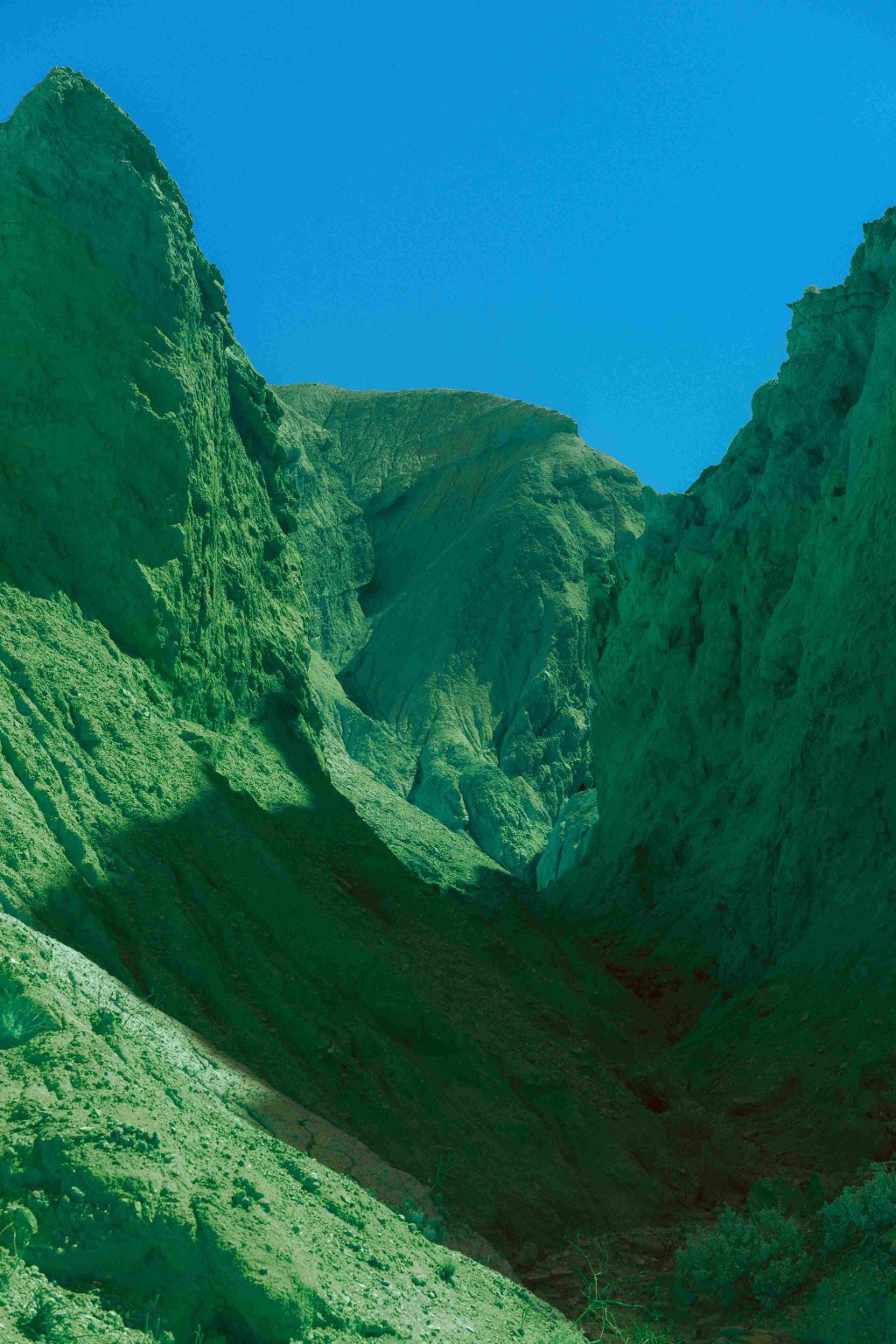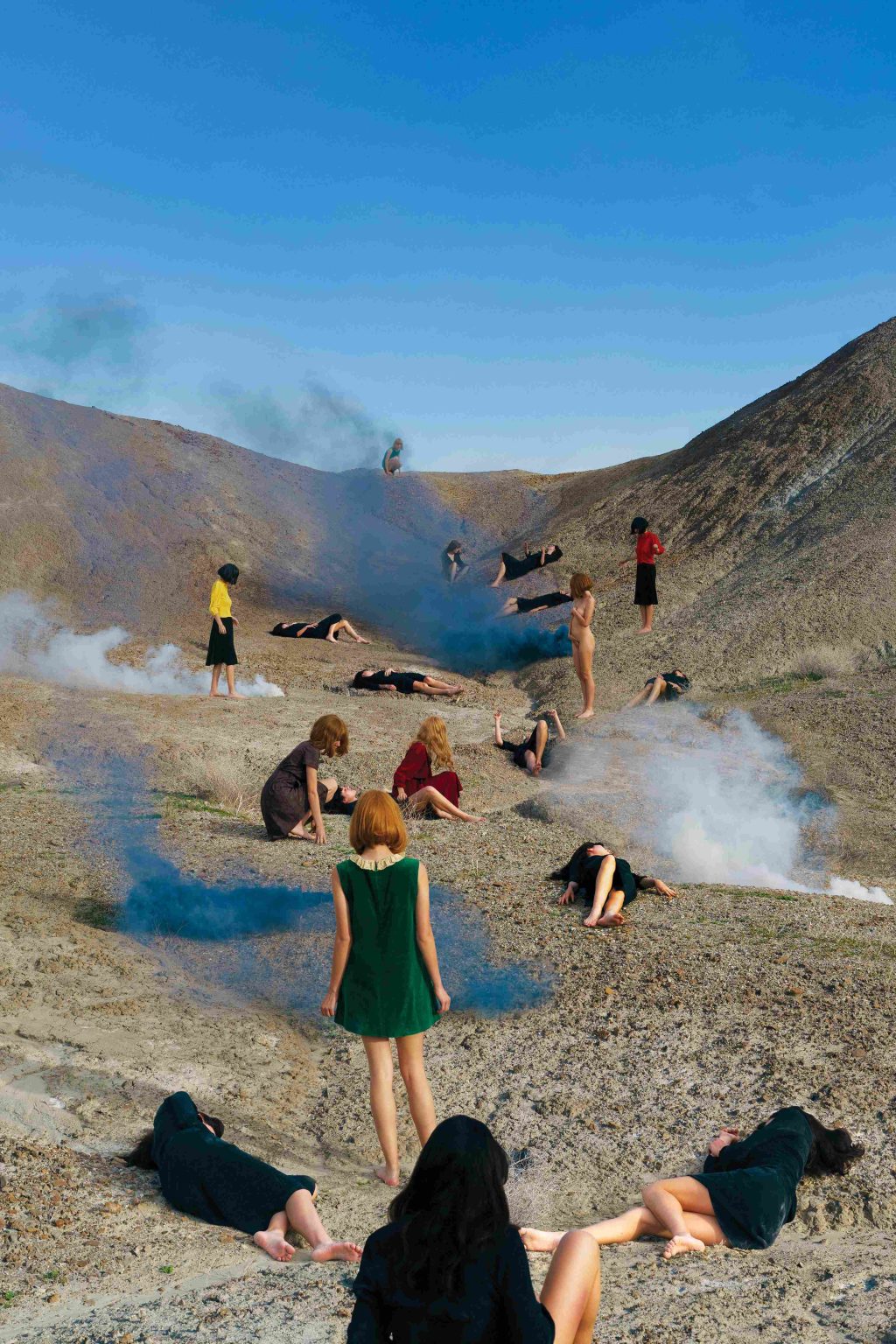Inhabiting The Surreal Dream Scape
The images that come out of LA-based Neil Krug’s photography studio are truly out of this world. Creating surreal images with a focus on landscape and the body form, Neil’s practice has entranced his audience, from celebrity clients to galleries to fashion houses. From the dark, moody emotions evoked in the Phantom series that arose from the artist’s dreams to shooting the Givenchy SS19 haute couture collection, Neil has done it all. Focusing on making pictures “that’ll make grandma faint”, we spoke with Neil to learn the behind the scenes methods of making his ideas come to life.


Images have a surreal, dream-like quality to them, specifically referencing the Phantom: Stage One and Spirit collections. These two bodies of work at once feel dark, catastrophic, and yet highly utopic. Can you talk a little bit more about these two bodies of work, some of your ideas/inspirations, and what they mean to you?
Neil Krug: I know what you mean and I see the same in both projects, despite the inspirations being opposite.
The Phantom project initially wasn’t anything but a reoccurring dream I was having several years ago. For whatever reason the spirits must’ve been summoning something within my subconscious; the imagery came to me consistently whilst sleeping and for the most part fully-formed –– which doesn’t happen that often in my case.
For me, if an idea continues to present itself time and again, I generally run with it.
The atmosphere of the Phantom works is, in some way, the narrative of the work itself.
In Phantom: Stage One the female figure takes center stage. What’s the message behind the prominence of these bodies?
Neil Krug: Kaiman Kazazian played all the roles in the entire stage one installment of Phantom. It’s a character and performance that demanded a herculean focus and attention to detail, which I’m still impressed with when I look at the photographs.
From the moment I released the work, I’ve had people ask “What’s the message of the work,” which I think is best answered by returning to the place where the ideas came from: dreams.
” I just take the time to make what I want to happen, happen.”
What does your process look like? What does the technical aspect of creating these magical photographs entail?
Neil Krug: The process of making the Phantom imagery is without a doubt the most brutal. A person sitting on their phone or computer viewing the work probably doesn’t see it that way. The locations are unforgiving, the shoots are long, and the edit is a beast that defies wrangling.
The project demands the most of me creatively and physically.
Technically, making the work is a mixture of tools and tricks I’ve been developing for the last decade. When I’m an old man and ready to hang up my hat, I’ll probably give away all the secrets.
What inspires you the most?
Neil Krug: I’m at a point in my life where I don’t feel like that answer can be put into words.
You directed and photographed the Givenchy Haute Couture SS19 collection. In your eyes, how does moving image differ from, or complement, photography?
Neil Krug: That entire campaign was filmed and photographed in under 4 hours, if you can believe it.
I was blessed to have a talented crew who understood the creative objective as if it was their own. I collaborated with the great cinematographer Katelin Arizmendi, which undoubtedly made the piece as strong as it is.
I don’t differentiate the photography and motion; in this case, I wanted both to blend seamlessly.
Why photography? What do you find so appealing about the medium?
Neil Krug: There is no specific answer I can give. I try not to get overly analytical about a question like that, but what I do know is that I love making images and I presume that will always be the case. It’s the only thing that I’ve been obsessed with since I was a kid, and it’s a journey that has been proven to be the defining purpose of my life.


‘‘The stories I’m often attracted to in other artist’s works are often the inexplicable narratives. The world building has been done so effectively that the viewer can lose themselves in the setting.’’
What stories are you looking to tell through your photographs? Do you think those stories are mirrored onto your audiences?
Neil Krug: The stories I’m often attracted to in other artist’s works are often the inexplicable narratives. The world building has been done so effectively that the viewer can lose themselves in the setting.
I remember seeing a collection of Eikoh Hosoe’s work years ago in-person and being struck by the wildness of the imagery and the expression of the B&W tones. Stunning imagery to say the least. To this day, I’m unaware of what his [Hosoe] work means literally, and I think it’s best that way. It’s almost like a feeling of an unresolved romance.
It lingers.
I hope the audience has enjoyed my work in a similar fashion. It’s impossible to know though.
You’re announcing campaigns and new series of work soon – can you tell us a little more?
Neil Krug: There is a lot on the horizon for myself and my gang of collaborators—some of which I am not at liberty to speak on yet. But, what I can share with you is that my studio collaborator, Kaiman Kazazian, and I have been hard at working putting together two projects simultaneously. Both works fall into the category of the freakout-splintered aesthetic and almost feel like a return to form for me. Any time I get the chance to make the kind of imagery that’ll make grandma faint, I know I’m on the right track.
Last question: What does hope mean to you?
Neil Krug: I try not to hope for anything. I just take the time to make what I want to happen, happen.
Interview by Ethan Ekin Dinçer
FROM BASED ISTANBUL NO41: HOPE ISSUE